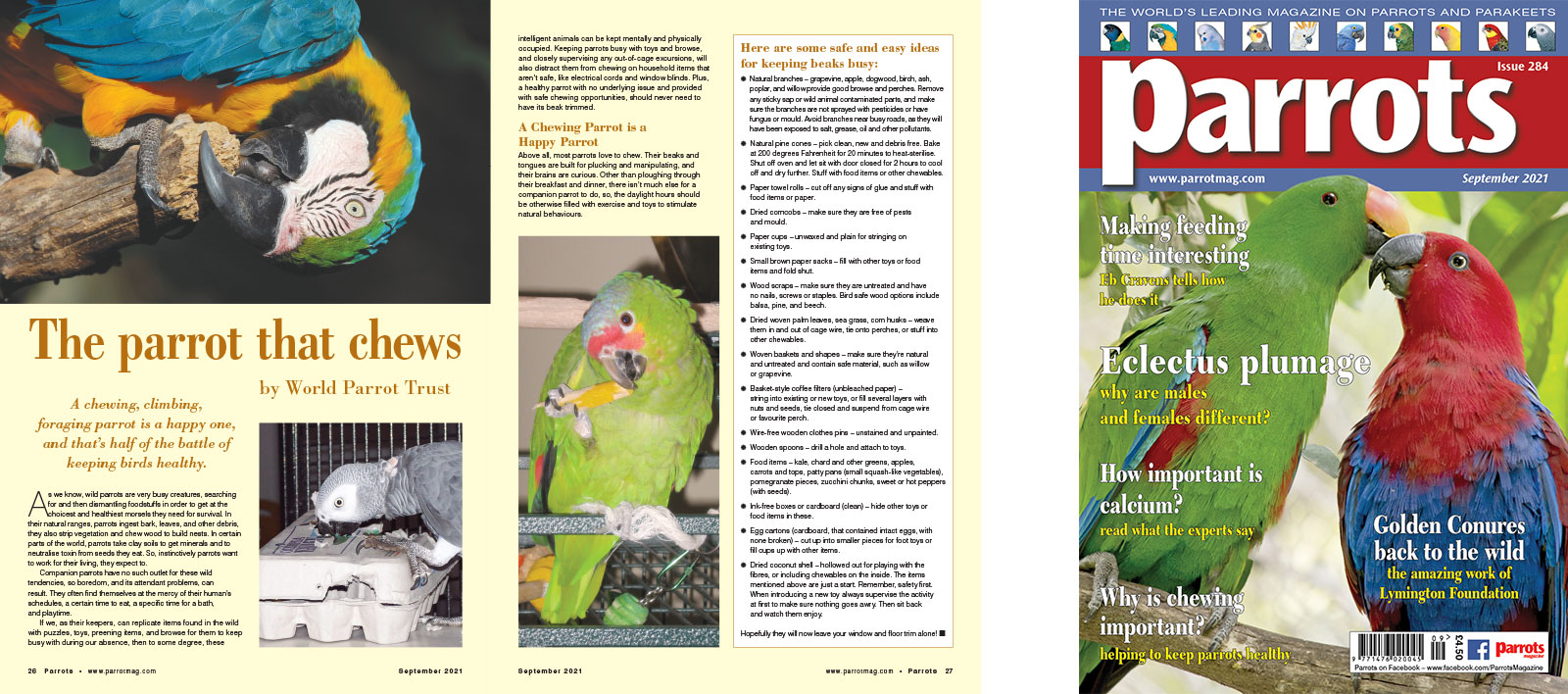
By World Parrot Trust
As we know, wild parrots are very busy creatures, searching for and then dismantling foodstuffs in order to get at the choicest and healthiest morsels they need for survival. In their natural ranges, parrots ingest bark, leaves, and other debris, they also strip vegetation and chew wood to build nests. In certain parts of the world, parrots take clay soils to get minerals and to neutralise toxin from seeds they eat. So, instinctively parrots want to work for their living, they expect to.
Companion parrots have no such outlet for these wild tendencies, so boredom, and its attendant problems, can result. They often find themselves at the mercy of their human’s schedules, a certain time to eat, a specific time for a bath, and playtime.
If we, as their keepers, can replicate items found in the wild with puzzles, toys, preening items, and browse for them to keep busy with during our absence, then to some degree, these intelligent animals can be kept mentally and physically occupied. Keeping parrots busy with toys and browse, and closely supervising any out-of-cage excursions, will also distract them from chewing on household items that aren’t safe, like electrical cords and window blinds. Plus, a healthy parrot with no underlying issue and provided with safe chewing opportunities, should never need to have its beak trimmed.
